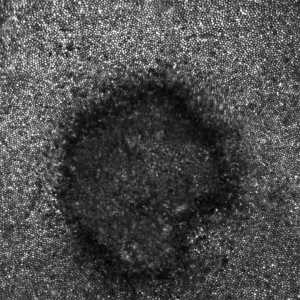Textured popcorn ceilings may contain asbestos, lung cancer and mesothelioma risk
If you have a textured ceiling in your home that kind of looks like popcorn, also known as cottage cheese ceiling, stucco ceiling or acoustic ceiling, and it's been there for about 20 or more years, you of course don't want to eat it, but you also do not want to sand away at it, puch a hole in it to hang something, or bounce a ball against it. The reason: it may contain the carcinogen asbestos. And asbestos fibers in the air is what makes it cancerous. Asbestos fibers get released into the air when they are disturbed, damaged, removed improperly, repaired, cut, tornsanded, sawed, drilled or scraped.
While you can't tell for sure that the textured ceiling - or ceiling tiles, floor tiles, pipe insulation, paper back on carpet, older furnaces, roof tiles, or exterior sliding - contains asbestos just by the look of it, the date that it was built is a good clue. In homes, apartments, condos, buildings, etc. built before 1990 there is a good chance and a professional would need to be hired to test for asbestos to confirm it. Asbestos was banned in ceiling treatments by the Clean Air Act of 1978 in the United States, however existing inventories of asbestos-bearing texturing materials were exempt from the ban to minimize economic hardship to suppliers and installers. So, it's possible to find asbestos in these ceiling treatments through the 1980s.
How much of a health risk is asbestos? Here's what the NIH (National Cancer Institute) says about "Asbestos Exposure and Cancer Risk":
People may be exposed to asbestos in their workplace, their communities, or their homes. If products containing asbestos are disturbed, tiny asbestos fibers are released into the air. When asbestos fibers are breathed in, they may get trapped in the lungs and remain there for a long time. Over time, these fibers can accumulate and cause scarring andinflammation, which can affect breathing and lead to serious health problems (6).
Asbestos has been classified as a known human carcinogen (a substance that causes cancer) by the U.S. Department of Health and Human Services, the EPA, and the International Agency for Research on Cancer (2, 3, 7, 8). Studies have shown that exposure to asbestos may increase the risk of lung cancer and mesothelioma (a relatively rare cancer of the thin membranes that line the chest and abdomen). Although rare, mesothelioma is the most common form of cancer associated with asbestos exposure. In addition to lung cancer and mesothelioma, some studies have suggested an association between asbestos exposure and gastrointestinal and colorectal cancers, as well as an elevated risk for cancers of the throat, kidney, esophagus, and gallbladder (3, 4). However, the evidence is inconclusive.
Asbestos exposure may also increase the risk of asbestosis (an inflammatory condition affecting the lungs that can cause shortness of breath, coughing, and permanent lung damage) and other nonmalignant lung and pleural disorders, including pleural plaques (changes in the membranes surrounding the lung), pleural thickening, and benign pleural effusions (abnormal collections of fluid between the thin layers of tissue lining the lungs and the wall of the chest cavity). Although pleural plaques are not precursors to lung cancer, evidence suggests that people with pleural disease caused by exposure to asbestos may be at increased risk for lung cancer
If you are shoping for a new home or apartment, ask if it's been tested for asbestos. If you are given a form to sign that it may contain asbestos, it is because of the dates of the building construction and it just might.



 Report a concern
Report a concern

 Add Comment
Add Comment



